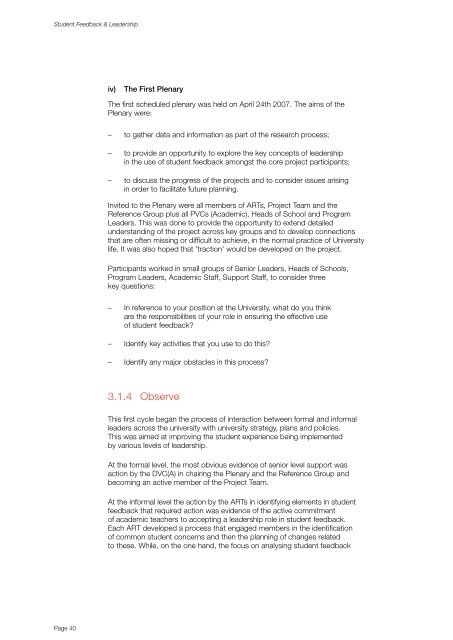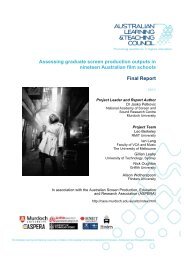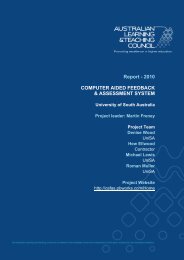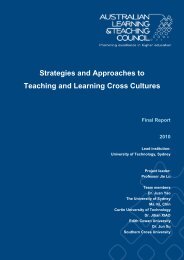student feedback and leadership - Office for Learning and Teaching
student feedback and leadership - Office for Learning and Teaching
student feedback and leadership - Office for Learning and Teaching
You also want an ePaper? Increase the reach of your titles
YUMPU automatically turns print PDFs into web optimized ePapers that Google loves.
Student Feedback & Leadershipiv)The First PlenaryThe first scheduled plenary was held on April 24th 2007. The aims of thePlenary were:––to gather data <strong>and</strong> in<strong>for</strong>mation as part of the research process;––to provide an opportunity to explore the key concepts of <strong>leadership</strong>in the use of <strong>student</strong> <strong>feedback</strong> amongst the core project participants;––to discuss the progress of the projects <strong>and</strong> to consider issues arisingin order to facilitate future planning.Invited to the Plenary were all members of ARTs, Project Team <strong>and</strong> theReference Group plus all PVCs (Academic), Heads of School <strong>and</strong> ProgramLeaders. This was done to provide the opportunity to extend detailedunderst<strong>and</strong>ing of the project across key groups <strong>and</strong> to develop connectionsthat are often missing or difficult to achieve, in the normal practice of Universitylife. It was also hoped that 'traction' would be developed on the project.Participants worked in small groups of Senior Leaders, Heads of Schools,Program Leaders, Academic Staff, Support Staff, to consider threekey questions:––In reference to your position at the University, what do you thinkare the responsibilities of your role in ensuring the effective useof <strong>student</strong> <strong>feedback</strong>?––Identify key activities that you use to do this?––Identify any major obstacles in this process?3.1.4 ObserveThis first cycle began the process of interaction between <strong>for</strong>mal <strong>and</strong> in<strong>for</strong>malleaders across the university with university strategy, plans <strong>and</strong> policies.This was aimed at improving the <strong>student</strong> experience being implementedby various levels of <strong>leadership</strong>.At the <strong>for</strong>mal level, the most obvious evidence of senior level support wasaction by the DVC(A) in chairing the Plenary <strong>and</strong> the Reference Group <strong>and</strong>becoming an active member of the Project Team.At the in<strong>for</strong>mal level the action by the ARTs in identifying elements in <strong>student</strong><strong>feedback</strong> that required action was evidence of the active commitmentof academic teachers to accepting a <strong>leadership</strong> role in <strong>student</strong> <strong>feedback</strong>.Each ART developed a process that engaged members in the identificationof common <strong>student</strong> concerns <strong>and</strong> then the planning of changes relatedto these. While, on the one h<strong>and</strong>, the focus on analysing <strong>student</strong> <strong>feedback</strong>Page 40
















